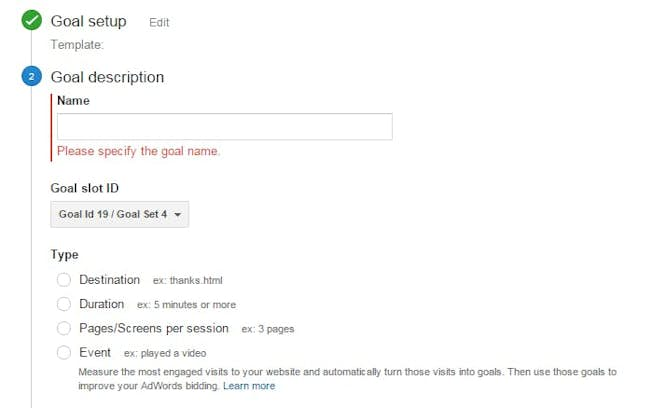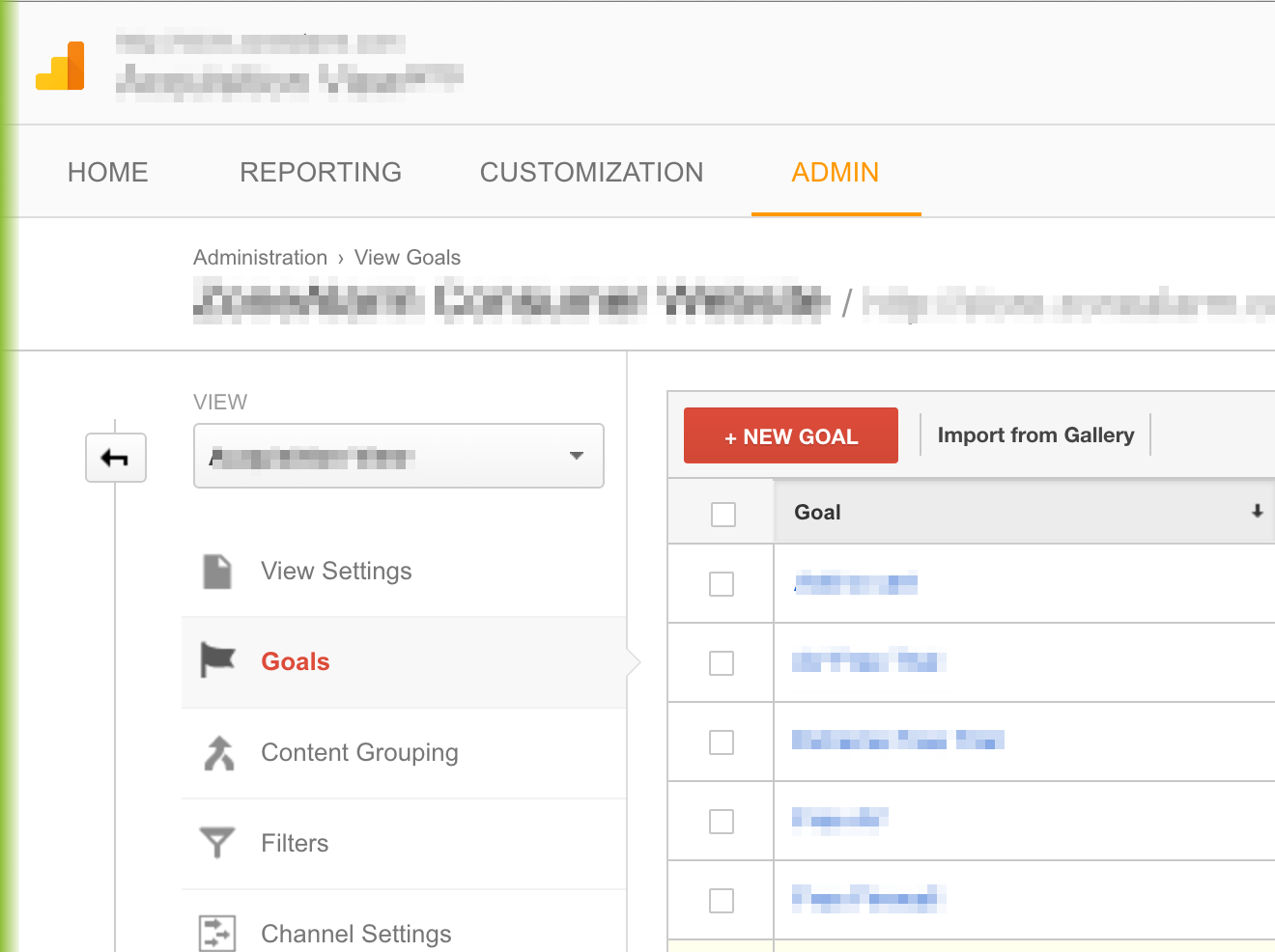Discover What Data Is Google Analytics Goals Unable to Track
Discover What Data Is Google Analytics Goals Unable to Track
Blog Article
Discover the Limitations of Google Analytics Goals: Unveiling the Data Types That Remain Untrackable
As companies increasingly count on data-driven decision-making, comprehending the constraints of tools like Google Analytics ends up being vital. While Google Analytics Goals deal valuable insights right into customer communications, there exist data kinds that elude monitoring, presenting difficulties to a comprehensive understanding of customer behavior. These untrackable data kinds increase inquiries about the precision and completeness of the analytics information that companies heavily rely upon for their digital strategies. Curious to uncover the surprise dead spots in your information evaluation procedure?
Incomplete Individual Journey Tracking
Incomplete individual trip monitoring within Google Analytics can prevent the ability to accurately evaluate customer behavior. When the customer trip is not totally tracked, there are voids in the information that avoid a comprehensive understanding of exactly how users engage with a web site. This absence of understanding can bring about missed chances for optimization and enhancements to the user experience.
One common issue with insufficient customer journey tracking is the inability to see the complete path that users take in the past finishing a goal or leaving the website. Without this details, it is testing to determine where users may be running into challenges or friction factors that stop them from transforming. Additionally, insufficient tracking can obscure the impact of particular advertising and marketing efforts or web site modifications on user actions.
To resolve this constraint, it is crucial to establish up appropriate tracking mechanisms within Google Analytics to record the entire user trip. This may involve establishing up occasion tracking, objective funnels, or using devices like Google Tag Manager to guarantee that no important communications go unrecorded. By gaining a thorough view of the user journey, internet site owners can make even more educated choices to boost user involvement and drive conversions.
Attribution Obstacles
Browsing via attribution obstacles in Google Analytics requires a detailed understanding of how different touchpoints add to the total conversion procedure. Acknowledgment challenges occur from the complexity of contemporary customer journeys, where individuals connect with numerous channels prior to transforming.
One usual acknowledgment obstacle is the trouble in connecting conversions to the correct source, particularly in cases where users interact with multiple networks before transforming. This can lead to mistakes in establishing which advertising initiatives are driving the most conversions. Additionally, cross-device tracking positions one more attribution obstacle, as individuals usually switch over in between gadgets throughout their trip, making it testing to track their interactions seamlessly. Marketers have to meticulously assess and translate acknowledgment data to make informed choices and maximize their advertising methods efficiently.
Offline Conversions
Provided the challenges connected with connecting conversions accurately in online networks, the measurement of offline conversions provides a substantial possibility for marketing experts seeking an extra thorough understanding of their clients' trip. Offline conversions refer to actions that consumers take in the real world, such as making acquisitions in brick-and-mortar shops or over the phone, attending occasions, or involving with published products - what data is google why not try these out analytics goals unable to track. These conversions are crucial for services that run both online and offline, as they provide beneficial understandings right into the effectiveness of advertising and marketing campaigns across numerous touchpoints
Tracking offline conversions traditionally postured a significant difficulty for marketers, as it was challenging to attach these activities back to details on the internet interactions precisely. Nonetheless, with developments in innovation, such as the assimilation of CRM systems, unique identifiers, and coupon codes, services can now link the void between online and offline information to get an extra alternative view of client behavior. By effectively gauging offline conversions, online marketers can optimize their strategies, designate sources a lot more effectively, and eventually enhance the general customer experience.
Cross-Device Tracking
Cross-device monitoring plays a critical function in recognizing the interconnected nature of consumers' electronic interactions across multiple tools. In today's omnichannel world, where customers flawlessly change between desktops, tablets, and mobile phones, tracking their habits throughout these devices is crucial for marketers to gain a web thorough view of their client trip.

Moreover, personal privacy concerns and laws such as GDPR and CCPA have further challenging cross-device monitoring. With users requiring even more control over their data and boosted restrictions on monitoring modern technologies, marketers need to locate privacy-compliant and innovative means to connect user interactions throughout gadgets.
Dynamic Material Involvement
Comprehending individual involvement with dynamic material is pivotal in optimizing electronic advertising techniques for enhanced audience communication. Dynamic material refers to site aspects that change based upon customer behavior, choices, or other elements, providing a customized experience. However, tracking user interactions with dynamic material presents difficulties for standard analytics tools like Google Analytics.
While Google Analytics can track basic interactions like clicks and web page views, it may battle to capture more nuanced interactions within dynamic content. what data is google analytics goals unable to track. Metrics such as time invested on particular vibrant elements, hover activities, or interactions within pop-ups are often not easily measurable using typical monitoring approaches. This constraint prevents marketing experts' capacity to fully understand how users are engaging with dynamic web content and customize their strategies appropriately

Conclusion
In final thought, Google Analytics goals have constraints in tracking insufficient user journeys, associating conversions accurately, capturing offline conversions, tracking cross-device interactions, and determining dynamic material interaction. These restrictions highlight the relevance of discovering additional monitoring approaches and devices to obtain a more extensive understanding of individual habits and conversions beyond what Google Analytics can give.
While Google Analytics Goals deal beneficial understandings right into customer communications, there exist data types that elude tracking, positioning difficulties to an extensive understanding of individual behavior.Insufficient individual journey tracking within Google Analytics can hinder the ability to accurately assess customer actions. When the customer journey is not fully that site tracked, there are voids in the information that protect against a comprehensive understanding of just how individuals communicate with an internet site.One common problem with incomplete user trip tracking is the inability to see the full path that customers take in the past finishing an objective or leaving the site. By acquiring a comprehensive view of the customer journey, internet site owners can make more enlightened decisions to enhance individual interaction and drive conversions.
Report this page